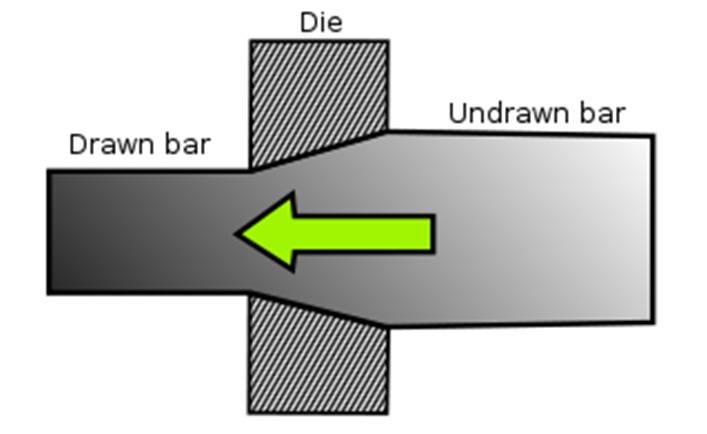Forming is the most widely used sheet metal operation used for manufacturing various sheet metal components across the industry.

Image courtesy: Wiki
Based upon the manufactured components and the manufacturing process, various kinds of forming are developed.
Different types of sheet metal forming processes and their applications and characteristics are discussed below:
- Roll forming
In this process the sheet metal is passed through a large numbers of set of rollers continuously. The each set of rollers do a little change in the shape of the flat sheet by means of forming.
Applications and characteristics:
– Suitable for constant cross section and long sheetmetal parts.
– Good surface finished component can be produced.
– Suitable for mass production
– Less production cost and heavy tooling cost.
- DeepDrawing
Instead of the rollers, if the forming of the sheet metal happens through a series of die and punch then the process is called drawing
and when the depth of the drawing is more than the diameter of the component then the process is called as deep drawing.
Applications and characteristics:
- Shallow components like sheet metal caps and cups are suitable candidates for this process
- Suitable for mass production
- Less production cost and heavy tooling cost.
- Stamping
Lots of sheet metal manufacturing processes like embossing, coining, flanging, stamping, punching etc comes under stamping where a single or multiple stations of die are used.
Applications and characteristics:
- Suitable for mass production
- Less production cost and heavy tooling cost.
- Stretch forming
As the name suggested, large sheet metal pieces are stretched to give its shape by holding it tightly with two jaws and forcing against the stretching die.
Applications and characteristics:
- Suitable for large sheet metal components like car door panel, aircraft fuselage, wing panel etc.
- Suitable for large bending radius
- Low production rate
- High labour cost
- Rubber pad forming
Instead of the ‘die’ and ‘punch’, the ‘die’ and a ‘rubber block’ is used for forming the sheet metal in rubber pad forming (RPF).
Applications and characteristics:
- Low tooling cost
- Suitable for soft material like aluminium
- Used mainly in aircraft industry
- Superplasticforming
Sheet metal is formed at elevated temperature to get the maximum elongation at Superplastic level.
Applications and characteristics:
- Works for titanium at 900 degree C and for aluminium at 500 degree C.
- Suitable for creating large and complex component in single operation.
- Good surface finish and precision can be obtained
- Components produced by this process not suitable for high temperature application
- Low production rate
- Spinning
Sheet metal spinning or turning is the process of producing the axially symmetric by turning in high speed through a CNC lathe.
Applicationsandcharacteristics:
- Only for axially symmetric components
- Low tooling cost
- High production cost
- Good surface finish
- Explosive forming
The pressure obtained from an explosive charge underwater is used for forming the sheet metal placed over a die.
Applications and characteristics:
- Suitable for extremely large component like boat hulls, aircraft components.
- Low tooling cost
- Very high cycle time
- Only for batch production
- Magnetic Pulse forming
This electromagnetic forming is done under the influence of high intensity electromagnetic to the electrically conductive materials like aluminium and copper.
Applications and characteristics:
- Used mainly for shrinking and bulging of tubes
- Low tooling cost
- High cycle time
- Wrinkles can be avoided
- Peen forming
Small round steel shots are blasted over the sheet metal in room temperature to form the sheet metal components in a dieless process.
Applications and characteristics:
- For large components
- High equipment cost
Hi, I am Shibashis, a blogger by passion and an engineer by profession. I have written most of the articles for mechGuru.com. For more than a decades i am closely associated with the engineering design/manufacturing simulation technologies. I am a self taught code hobbyist, presently in love with Python (Open CV / ML / Data Science /AWS -3000+ lines, 400+ hrs. )

Most sheet metal fabrication company http://www.bayviewmetals.com are having this process and it’s application which differs in each and as mentioned above the spinning process is an important one but it is costly and it can be use for symmetric components only.